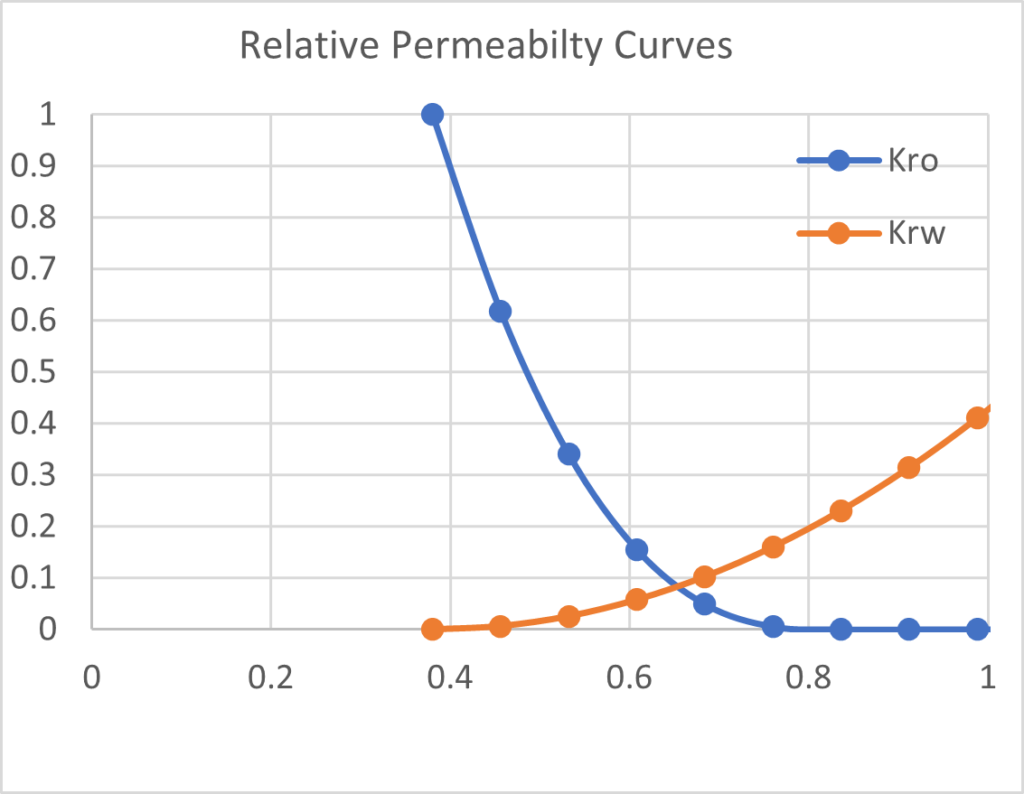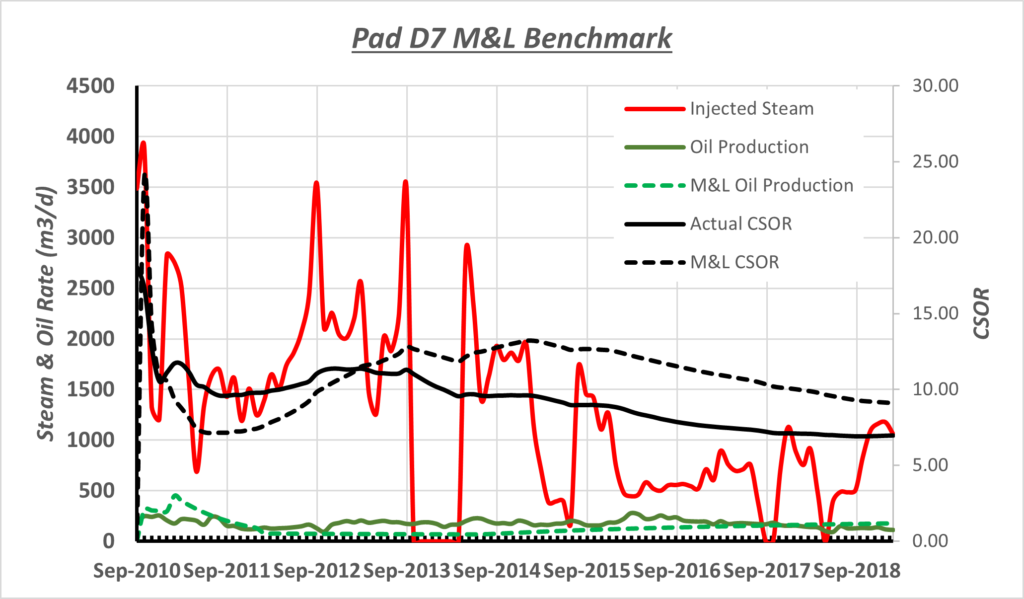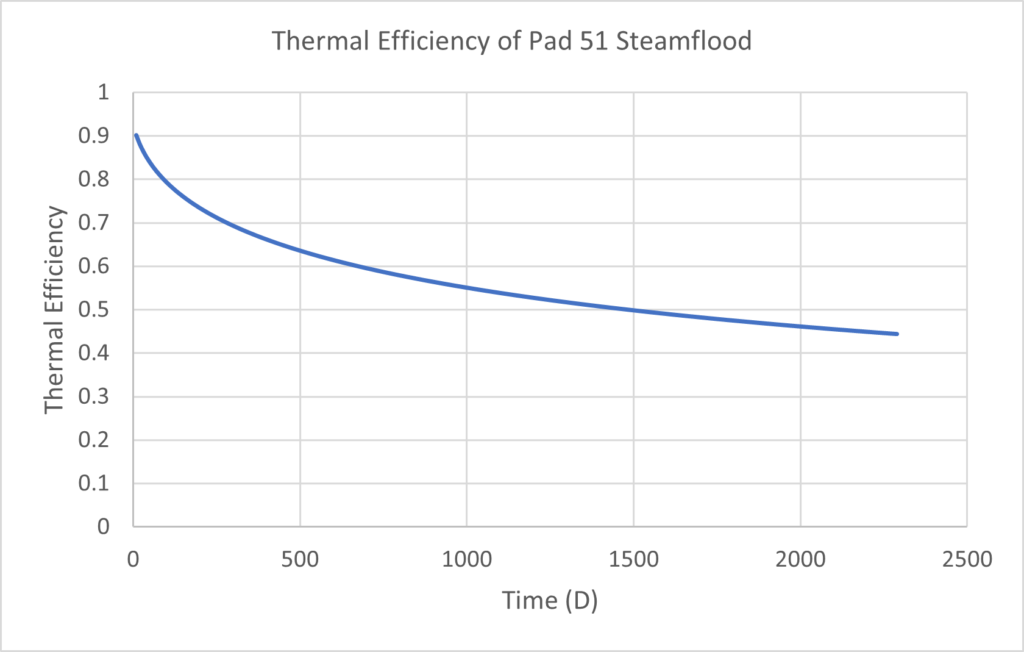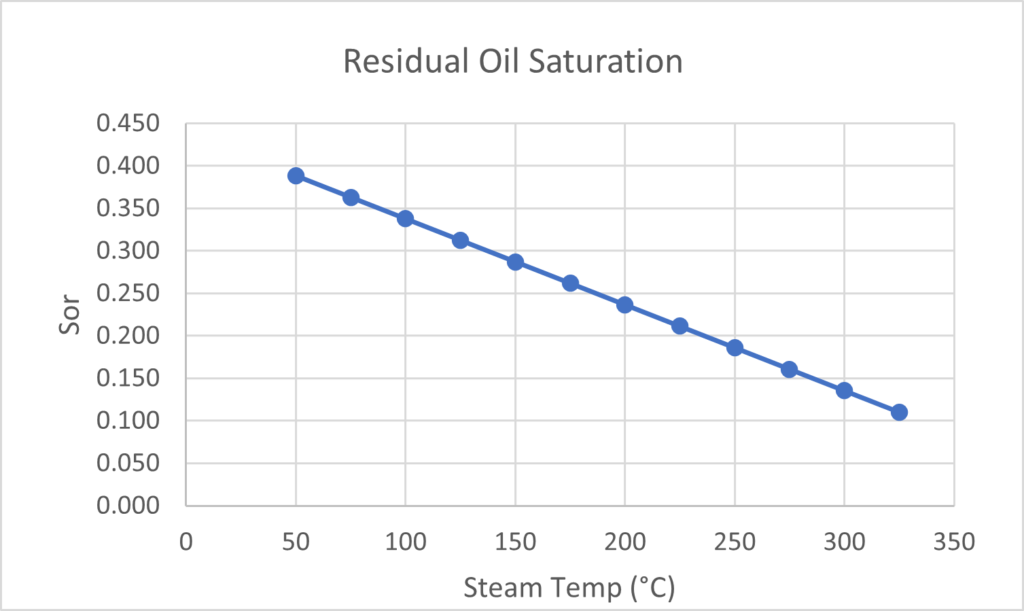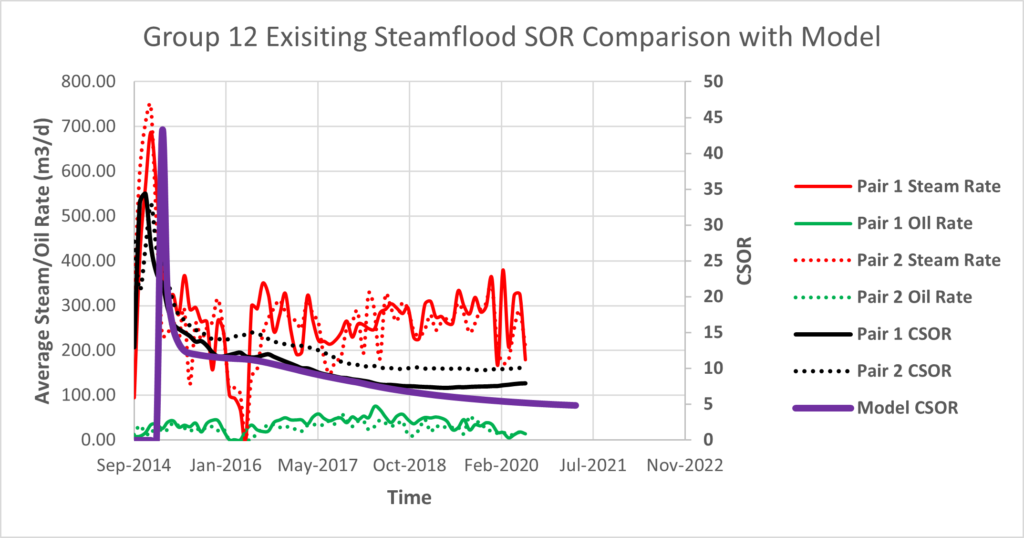Project Category: Multidisciplinary
Join our Presentation
About our Project
Canadian oil & gas is a highly sought-after commodity, considered to be produced at the most ethical standards in the world (“ESG Infographics”, 2020). As companies operating in the Canadian Oilsands increase production year over year (“Crude Oil Facts”, 2020), the costs to ensure the resource is exploited in an economical and environmentally sustainable way rise. This has resulted in profit margins for producers in the Oilsands to be on the decline (“The Future of Alberta’s Oil Sands”, 2020), meaning a large amount of a company’s resources now go into finding innovative ways to boost profits. A producer may put an exorbitant amount of time and energy into developing new oil plays, which is extremely costly, involving years of planning and development.
It is imperative that existing assets are being exploited to their full potential as oil is a finite resource, and the costs to develop new areas are high. For this project, the focus will be on thermal in situ oil recovery. Thermal oil recovery is considered an Enhanced Oil Recovery (EOR) method that is utilized when conventional methods of extracting oil are not feasible and/or not physically possible. These projects are economically taxing due to the costs from the R&D process to the execution and operation stages which can run into the multi-million-dollar range. The costs alone are why increasing oil recovery is extremely important.
A major player in thermal in situ oil sands development in Canada is Canadian Natural Resources Ltd. (CNRL). Currently, CNRL produces approximately 340,000 bbl/d (barrels of oil per day) from four thermal in situ oil sands assets. The Primrose and Wolf Lake asset, located in the Cold Lake Oil Sands (CLOS), is one of these assets. A well in this area, using the typical Cyclic Steam Stimulation (CSS) method, sees a recovery factor of 20-50% (Chopra, 2010). This means that 50-80% or more of the oil is unrecovered in the reservoir. For the CLOS this amounts to hundreds of millions of barrels of oil left behind. This is a result of many factors, one of which is simply economics. From the moment a well begins to produce, recovery is expected to drop until it is no longer economical to continue operating. That is, the cost to continue producing is outweighed by operations and maintenance costs.
Our primary objective is to develop an infill well operating strategy and performance prediction, for CNRL’s Primrose existing developments, to increase recovery in partially depleted zones and maximize value. Successful drilling and operation of infill wells will unlock previously unrecoverable oil reserves with the assistance from improved completion and operational techniques. Along with this, there will have to be consideration for simplicity and economic viability. This is meant to inject new life into zones previously thought to be depleted with a view to, save costs on developing new areas and removing the environmental footprint those developments would create.
Meet our Team Members

Details About our Design
HOW OUR DESIGN ADDRESSES PRACTICAL ISSUES
Our design addresses the issue of declining oil production in uneconomical zones by introducing infill wells that are operated effectively to mobilize previously unattained resources within the oil sands. This is possible through targeting immobile oil located between existing wells and incorporating new steaming strategies. With an effective steam strategy, better steam distribution along the wellbore is possible, resulting in more efficient use of the steam injection wells, successfully improving recovery. By bisecting the existing wells, the distance between injector and producer is reduced meaning oil is required to travel a shorter distance than before, promoting steam flooding and better communication between injector and producer. Successful drilling and operation of infill wells will unlock previously unrecoverable oil reserves with the assistance from improved completion and operational techniques.
WHAT MAKES OUR DESIGN INNOVATIVE
Our design brings new oilsands practices to existing areas in order to increase profitability. The reservoirs we studied were reaching depletion but after our design was implemented an increase in recovery was seen. Our design expands on existing infrastructure and existing wells, so the cost is much lower than drilling new pads. Since the infill wells are installed on current pads the overall environmental impact is also reduced.
Horizontal IOIs will be drilled between the rows of wells, target true vertical depth varies well to well but in general it is approximately 465m. The horizontal portion will span 900-1200m depending on adjacent producing wells. Currently CNRL’s spacing in their Group 2 and Group 6 areas are 160m and 188m respectively, which is too substantial for proper inter-well communication. Infill wells cut this spacing in half and increase recovery 15-30% relative to CSS (“Imperial Cold Lake Operations Directive 54 Annual Submission November 2019”, 2020). The completion of horizontal injector wells is not a new concept for CNRL, but infill horizontals solely for injecting steam is new in this area. Some considerations for the completion include casing sizes & grade, the type of cement needed and completion method of the horizontal section. Recommendations were formulated from IOL’s horizontal IOI designs, CNRL’s CSS and steam injection well designs, as well as AER requirements. The surface casing needs to be set based on the groundwater protection. According to (“Base of Groundwater Protection Data”, 2020) file provided by the AER, the deepest formation likely to contain non-saline ground water is in the range of 150-200 meters below surface. Surface casing will be set at 200m using 340mm sizing. H-40 grade is sufficient, but K-55 will be used to further enhance corrosion prevention. In compliance with the AER the surface casing must be cemented full length with thermal cement due to the high temperatures expected from the steam. RFC thermal cement is the best option for this area.
An intermediate casing string will be run from surface to the heel of the horizontal section. Large quantities of steam are expected so 244 mm will be used. L-80 type 1 is sufficient for resisting corrosion in all conditions and is the most economical choice for this wellbore. The intermediate casing must also be cemented full length with thermal cement due to the high temperatures expected from the steam. RFC thermal cement is recommended (“AER Directive 009”, 2020). 144.3 mm, J-55 tubing will be hung to slightly above where the intermediate is set in the heel. Steam will flow down the annulus and return fluids up the tubing. The horizontal portion will consist of a 168mm liner, large enough for our anticipated steam volume. The liner will be cemented in place using RFC thermal cement and we will use the method of limited entry perforations (LEP); perforations will be shot every 50m, similar to IOL’s practice of 100m. This method was chosen over a slotted liner completion because it provides the best assurance of achieving a uniform injection profile (Small, 1986).
Horizontal IOIs will be drilled between the rows of wells, target true vertical depth varies well to well but in general it is approximately 465m. The horizontal portion will span 900-1200m depending on adjacent producing wells. Currently CNRL’s spacing in their Group 2 and Group 6 areas are 160m and 188m respectively, which is too substantial for proper inter-well communication. Infill wells cut this spacing in half and increase recovery 15-30% relative to CSS (“Imperial Cold Lake Operations Directive 54 Annual Submission November 2019”, 2020). The completion of horizontal injector wells is not a new concept for CNRL, but infill horizontals solely for injecting steam is new in this area. Some considerations for the completion include casing sizes & grade, the type of cement needed and completion method of the horizontal section. Recommendations were formulated from IOL’s horizontal IOI designs, CNRL’s CSS and steam injection well designs, as well as AER requirements.
The surface casing needs to be set based on the groundwater protection. According to (“Base of Groundwater Protection Data”, 2020) file provided by the AER, the deepest formation likely to contain non-saline ground water is in the range of 150-200 meters below surface. Surface casing will be set at 200m using 340mm sizing. H-40 grade is sufficient, but K-55 will be used to further enhance corrosion prevention. In compliance with the AER the surface casing must be cemented full length with thermal cement due to the high temperatures expected from the steam. RFC thermal cement is the best option for this area.
WHAT MAKES OUR DESIGN SOLUTION EFFECTIVE
Our design is formed from an analytical approach. The Marx and Langenheim model was used to predict oil rate upon conversion to steamflood. Since our main competitor in the area (IOL) is currently using the steamflooding approach to old CSS wells, we needed to determine if their data was analogous to ours. This was done by obtaining reservoir properties for various pads in OIL operations. The first order was to determine the initial steam injectional rate. Typically, higher rates are used in the first “cycle” to establish formation dilation and compaction. To decide on injection rate, time, and pressure of the initial cycle, the Team used IOL data as analog. After examining various pads in the IOL CLOS operation, the average rate of injection in the first cycle appears to be around 2000 m3/day for approximately 150 days. However, simply applying these numbers to our design would not be satisfactory. These rates depend on various reservoir parameters, and even though we can use IOLs Clearwater reservoir as analogous to ours, it is not exactly the same. Therefore, we needed to determine a way to validate this injection rate. After debate amongst the Team, it was determined that the best technical approach was to calculate a suitable injection rate utilizing two different models and by working backwards from the data we had collected in the IOL analog data review. Two different sets of equations (models) were selected to provide greater certainty in the accuracy of the calculations. The size of the steam zone was selected as a comparable parameter and so we determined the size of the steam zone achieved by IOL using the equations presented below. This serves the purpose of scaling the injection performance based on IOLs specific reservoir to CNRL’s
To determine oil rate, the aforementioned Marx and Langenheim model was built. This model predicts oil rate as a function of heat injection. It relates the volume of steam chamber to the volume of oil displaced from the steam zone. Although it is known that the oil rate predicted by this model is slightly over estimated, various validations were conducted to determine the applicability of this model in our design.
HOW WE VALIDATED OUR DESIGN SOLUTION
In order to initially validate the design a performance comparison was completed with nearby comparable wells within the Cold Lake Oil Sands (CLOS), that have already successfully transitioned from producing cyclically to producing instead on a steamflood. Production data for numerous pads was pulled from AccuMap and a select number of pads were chosen for our data validation based on the completeness of the data sets, as production companies do not always report their production and injection data every month. This is especially the case on older wells. Using the production and injection data we were able to determine when these wells made the transition from CSS to steamflood, and we built CSOR plots from the beginning of steamflood to present day. These CSOR curves were then plotted against the CSOR type curve we built from the model we employed for this project. On average, we found the model was predicting a CSOR of 2 to 3, lower than that of the selected wells currently operating on steamflood, suggesting that the model was overpredicting oil rates. This was expected as the M&L model is known to slightly overpredict oil rates.
After completing the CSOR modelling, a sensitivity analysis was performed. We looked at the sensitivity of altering the steam injection rates by +/- 30% and found drastic changes in the predicted CSOR by the model. A sensitivity analysis was also performed on another input parameter known as residual oil saturation which is essentially a fraction of the remaining pore space occupied by bitumen at the end of life. This parameter was selected for the sensitivity analysis as the value had to be estimated with correlations. The predicted CSOR was affected by this parameter, but to a lesser extent than impact of adjusting the steam injection rates. The final validation that was completed on the design involved benchmarking predicted oil rates against the actuals for a selected number of wells. We used the steam injection rates used on existing wells operating on steamflood and input those into the model to estimate the production rates. These estimated production rates were then compared and plotted with the actual rates for these wells.
FEASIBILITY OF OUR DESIGN SOLUTION
We can relate the feasibility of our design to our predicted steam oil ratios (SOR) from the Marx & Langenheim model. Typical SOR’s of 3-8 are considered economical for a traditional steamflood. However, as we are performing Infill well steamflood higher SOR’s are expected. The SOR represents how much steam is required to produce 1m3 of oil and can be seen as a measure of efficiency. This helps determine the economic viability of our design by representing the cost to generate steam over the cost of oil. We also investigated the recovery factors (RF) in our area of interest and how infill wells would affect it. CNRL’s pad 51 wells have a recovery factor of 11%, if our Infill well strategy was implemented, we calculated the RF would be 29% which is a significant improvement.
Partners and Mentors
We wanted to thank everyone involved in this capstone. Firstly, thank you to our sponsor Peter at Canadian Natural Resources Ltd for the guidance and trust to undertake this project! A special thank you to our academic advisor, Dr. Roman Shor for his valued recommendations and support. Lastly, thank you Dr. Budiman and Saeedeh for keeping us on our toes.
Our Photo Gallery

